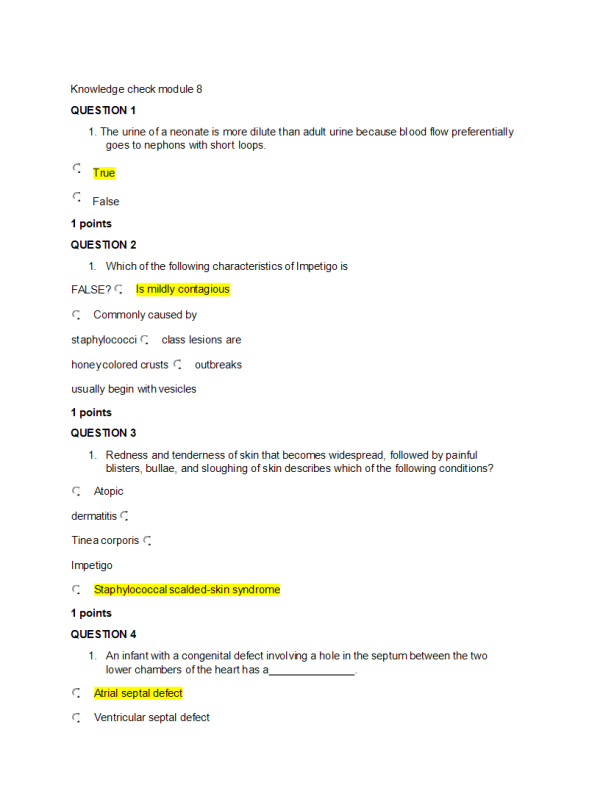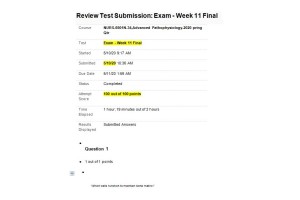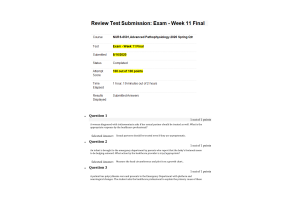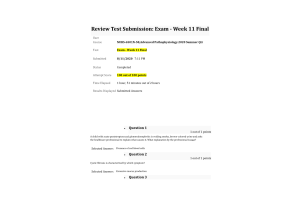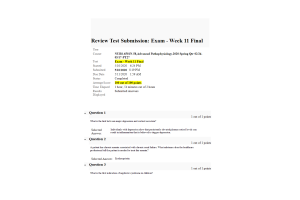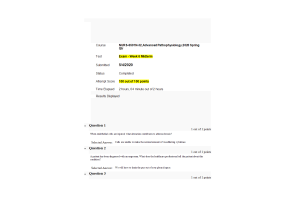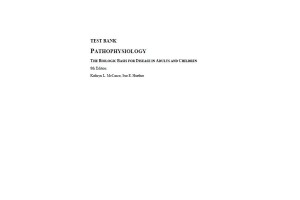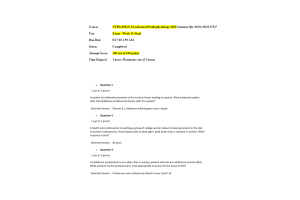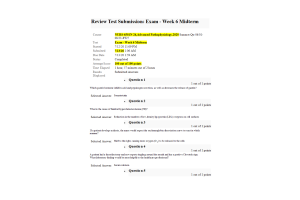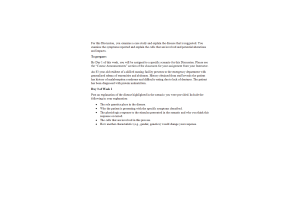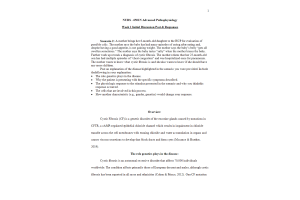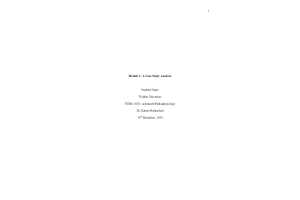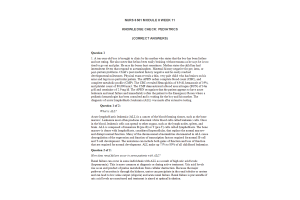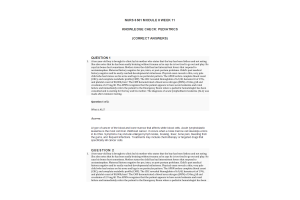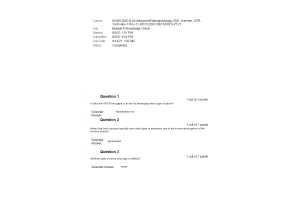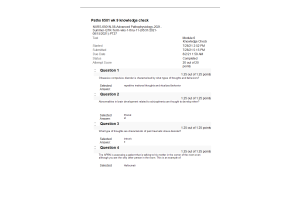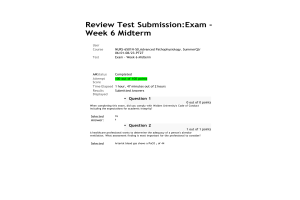NURS 6501 Week 11 Knowledge Check100% Correct
- $20.00
- Question: The urine of a neonate is more dilute than adult urine because blood flow preferentially goes to nephons with short loops.
- Question: Which of the following characteristics of Impetigo is FALSE?
- Question: Redness and tenderness of skin that becomes widespread, followed by painful blisters, bullae, and sloughing of skin describes which of the following conditions?
- Question: An infant with a congenital defect involving a hole in the septum between the two lower chambers of the heart has a .
- Question: An adolescent that uses anabolic steroids to increase muscle mass is at risk for developing which type of cancer?
- Question: Cerebral palsy involves what type of defects?
- Question: A tetrology of flow will cause what type of blood shunting?
- Question: What medication should a child with G6PD deficiency avoid because it can trigger a hemorrhage?
- Question: What is the function of G6P4?
- Question: Children with Down's Syndrome has an increased risk of developing which type of cancer?
- Question: A ventricular septal defect will cause what type of blood shunting?
- Question: Children who have atopic dermatitis often have elevated levels of .
- Question: Infants that have seizures typically have what types of symptoms due to the normal development of the nervous system?
- Question: The development of Kawasaki disease in young children is caused by: vasculitis of unknown cause
- Question: Children who have inherited deficiencies of antithrombin III or proteins C or S have increased risk for
- Question: Pruritic linear lesions that itch more at night that may have more vesicles and papules describes which of the following conditions?
- Question: Which of the following about Roseaola is FALSE? is also known as exanthema subitum
- Question: Marasmus is a severe deficiency of what?
- Question: Which of the following is true of people that have sickle cell anemia?
- Question: Rotavirus is the leading cause of what symptom in infants and young children?
